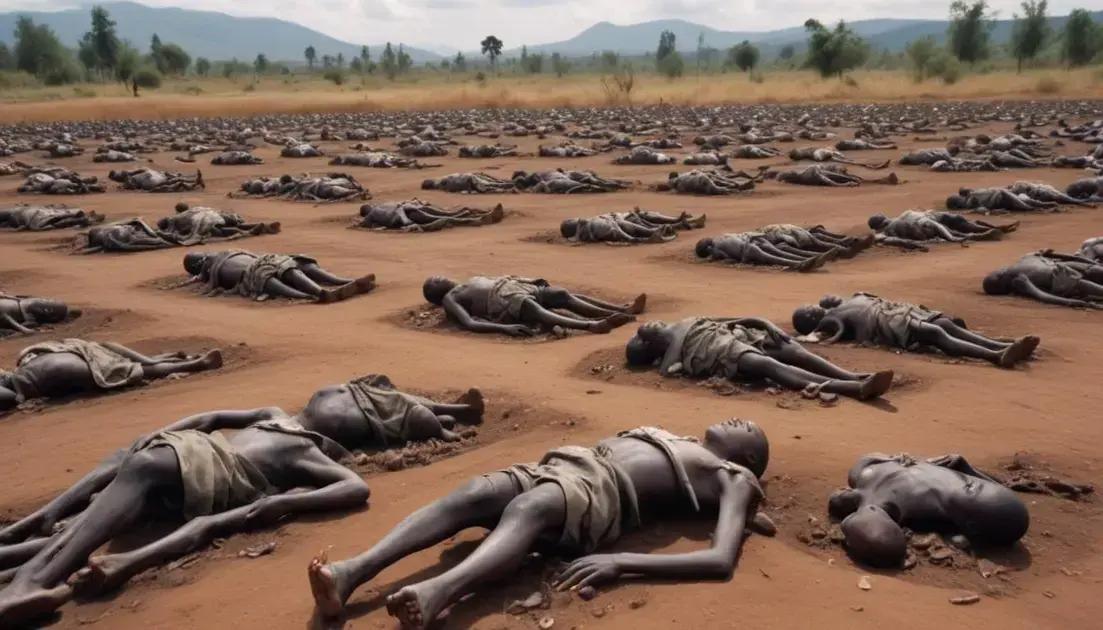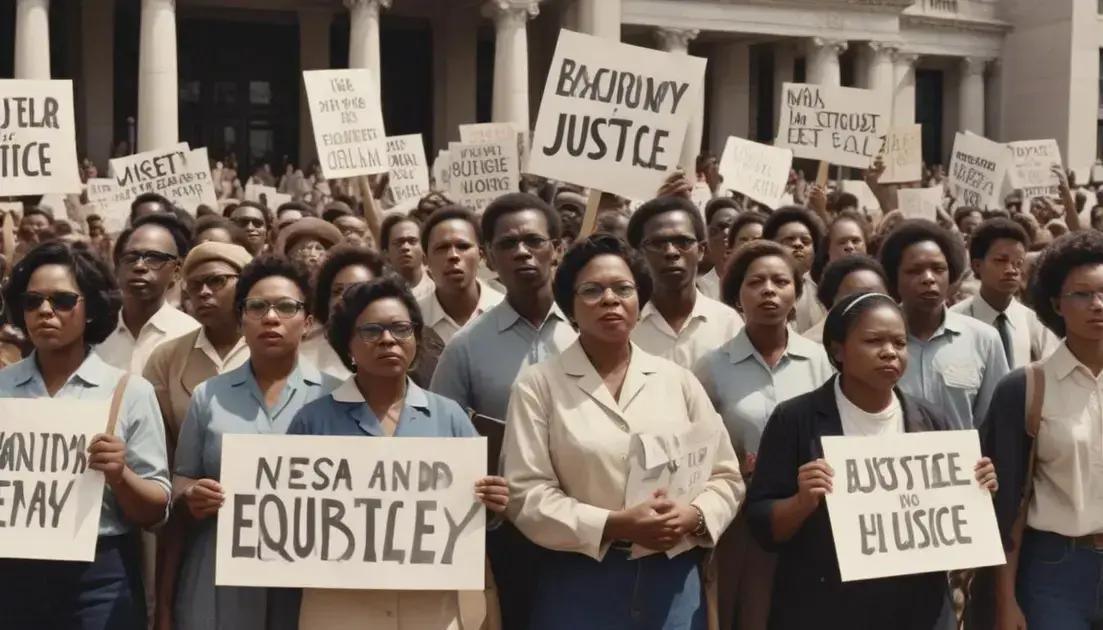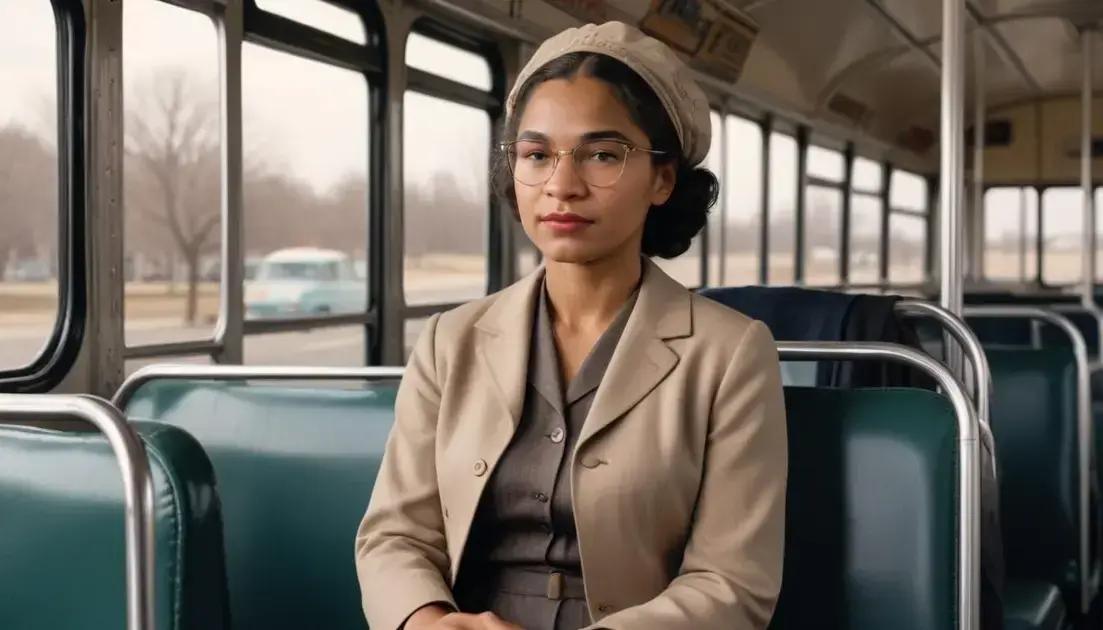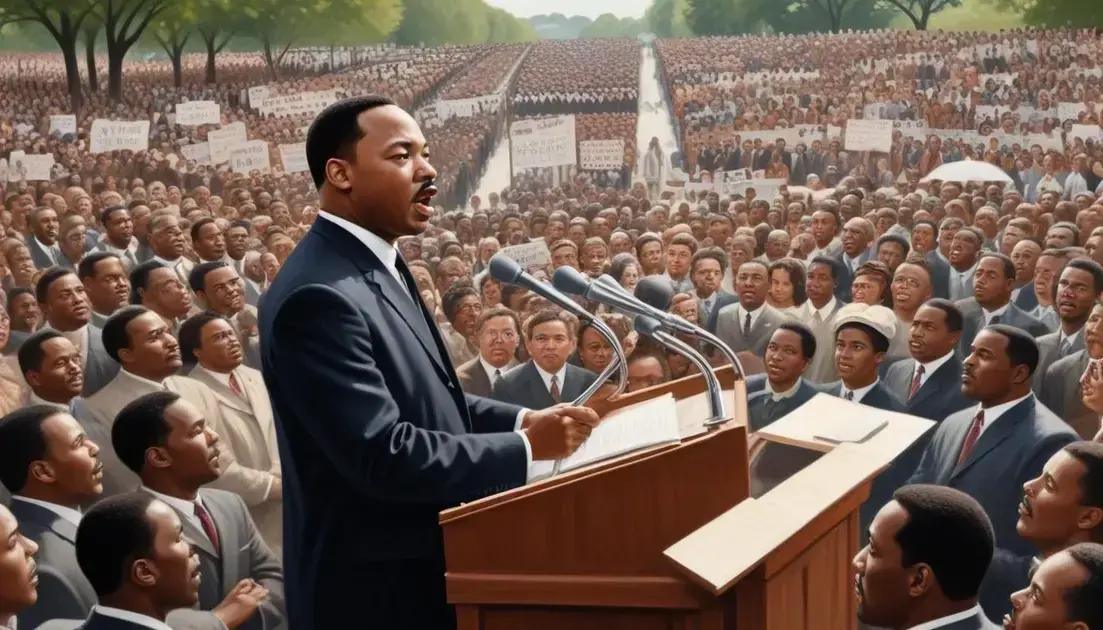
Rwandan Genocide: 100 Days of Horror
The Rwandan Genocide, which took place in 1994, resulted in the brutal killing of nearly 800,000 people in just 100 days. Key figures like President Juvénal Habyarimana and RPF leader Paul Kagame shaped the course of this tragedy. Despite the presence of UN peacekeepers, the global response was inadequate, leading to serious scrutiny of international obligations to protect human rights. In its aftermath, Rwanda has worked to rebuild, focusing on reconciliation and justice, while lessons learned emphasize the importance of rapid global intervention to prevent future atrocities.
The Rwandan Genocide stands as one of the darkest chapters in modern history, claiming almost a million lives in just 100 days. How did this tragedy unfold? Join us as we explore its harrowing details.
Overview of the historical context
The historical context of the Rwandan Genocide is essential to understanding this tragic event. Rwanda’s history is marked by deep ethnic divisions, primarily between the Hutu and Tutsi groups. These divisions were exacerbated by colonial rule, which favored the Tutsi minority over the Hutu majority. This created lasting resentment and tensions.
In the years leading up to the genocide, political and economic instability increased. The Rwandan Civil War began in 1990 when the Tutsi-led Rwandan Patriotic Front (RPF) invaded Rwanda. The conflict intensified fears among the Hutu population, leading to increased propaganda against the Tutsis.
By 1994, as peace negotiations appeared to falter, the situation escalated quickly. The assassination of Rwanda’s President, Juvénal Habyarimana, on April 6, 1994, triggered a massive outbreak of violence. Extremist groups, primarily within the Hutu community, began a systematic campaign against Tutsis and moderate Hutus.
This campaign was brutal and widespread, resulting in the deaths of around 800,000 people over just 100 days. The world largely stood by during this horror, raising questions about international responsibility and response.
Timeline of the genocide
The timeline of the genocide in Rwanda is crucial to understanding its rapid devastation. It all started in April 1994, a month filled with horror and chaos.
On April 6, 1994, a plane carrying President Juvénal Habyarimana was shot down. This assassination acted as a spark, igniting a violent response from Hutu extremists against Tutsis.
Within hours, violent rampages began in Kigali, the capital. Roadblocks were set up all over the city, and Tutsi civilians were hunted down.
By April 7, the killing spread quickly across the country. Government forces and militia groups targeted Tutsis with brutal efficiency. Many were murdered in their own homes.
Throughout April, the killings continued non-stop. Estimates suggest that thousands lost their lives each day. By the end of that month, the death toll was staggering.
In May 1994, the genocide intensified. Refugee camps began to fill with survivors, but the violence showed no signs of stopping. Rwandan forces pushed further as the international community stood largely inactive.
June brought a turning point. The Rwandan Patriotic Front (RPF) gained ground, slowing down the massacre. As they captured territory, some Tutsis finally found a safe haven.
By July 1994, the genocide officially ended. The RPF took control of the country, bringing a horrific chapter to a close. However, the scars of this tragedy run deep, affecting Rwandan society to this day.
Key figures involved
Several key figures played an important role during the Rwandan Genocide. These leaders influenced the events and shaped the course of history.
First, there’s President Juvénal Habyarimana. His assassination triggered the genocide. Habyarimana’s leadership favored the Hutu ethnic group, increasing tensions.
Next is Paul Kagame, the leader of the Rwandan Patriotic Front (RPF). He fought against the genocide and later became the country’s president. His forces were crucial in stopping the killings and restoring order.
Another important figure is Théoneste Bagosora. He was a key military leader and played a significant role in orchestrating the genocide. He influenced many of the attacks and violence against Tutsis.
Further, there were many grassroots leaders involved. Local militia leaders organized attacks in their communities. Their actions led to mass killings and horrible suffering.
Many others also contributed to the chaos, from journalists spreading hate to international leaders who stayed silent. Each of these figures helped shape the events, making the genocide one of the most tragic periods in history.
Global response and aftermath
The global response to the Rwandan Genocide was largely criticized. Many countries watched as the violence escalated but did little to help.
In 1994, just after the genocide began, the United Nations had peacekeepers in Rwanda. Sadly, their mandate limited their actions. They could not intervene effectively to stop the killings.
International leaders and organizations were aware of the growing crisis but failed to act quickly. Many nations were hesitant to get involved, fearing a repeat of past mistakes in other conflicts.
In the aftermath, the world faced serious questions about its moral responsibilities. The tragic events highlighted the need for stronger international action in such situations.
As for Rwanda, the aftermath was devastating. The country was left with deep scars, both physically and emotionally. Many survivors dealt with trauma and loss. The infrastructure was damaged, and social divisions remained.
In later years, Rwanda began to rebuild. Efforts focused on reconciliation and justice. The government established courts to try those responsible for the genocide.
Today, Rwanda works hard to prevent such a tragedy from happening again. The global community must learn from this dark chapter to ensure it never repeats.
Conclusion
In conclusion, the Rwandan Genocide remains a significant moment in history that teaches us critical lessons. The global response to the tragedy revealed many flaws in how the world protects human rights. Rwanda’s struggle to rebuild and heal shows strong resilience in the face of horror.
By remembering the past, we can work together to prevent such atrocities in the future. International cooperation and quick actions are essential in protecting innocent lives. It’s important to support nations in conflict and to promote peace. We must create a world where respect for everyone prevails, making sure history does not repeat itself.


